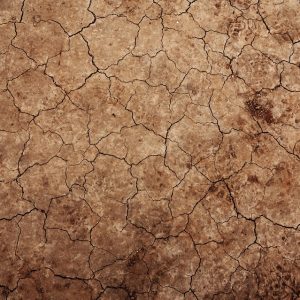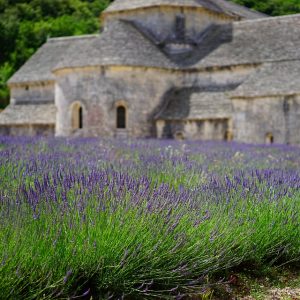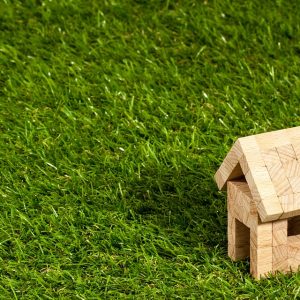Foundation Certificate in Plant Growth for Horticulture Level 2
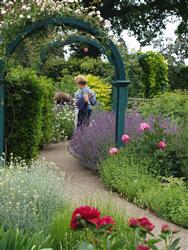 This is the starting point for gaining an exceptionally solid foundation in horticulture.
This is the starting point for gaining an exceptionally solid foundation in horticulture.
This course covers 4 units:
- The Plant Kingdom
- Plant Nutrition, The Root Environment
- Pests, Diseases and Weeds
- Sexual and Asexual Propagation
Anyone can study and learn a vast amount about horticulture from this course.
Study the creation and successful growing of plants with this outstanding horticulture course.
- Learn about plant classification and the plant naming system.
- Understand the differentiation between plant types and their nutritional and environmental requirements.
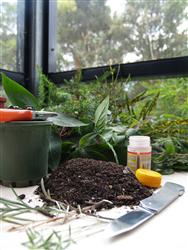
- Learn how to deal with plant illnesses and the control of pests and weeds.
- Study different methods of plant propagation.
COURSE STRUCTURE AND CONTENT
Course Duration: 150 hours.
Start Date: Start at any time – study at a pace that suits you, and with full tutor support for the duration of your studies.
Lessons: The course comprises 10 lessons, covering core areas:
The Plant Kingdom
Plant Nutrition, The Root Environment
Pests, Diseases and Weeds
Sexual and Asexual Propagation
Lesson details are listed below.
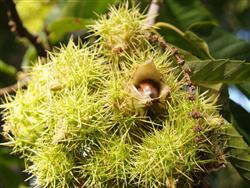 Lessson 1. Classification of Plants and the Plant Naming System
Lessson 1. Classification of Plants and the Plant Naming System
- Botanical and Horticultural
- Nomenclature: common names, scientific names.
- The Binomial System.
- Botanical Classification levels.
- Horticultural Groups.
- Plant Families and their distinguishing characteristics.
- Species, Hybrids, Varieties, Cultivars.
- Review of significant Dicotyledon and Monocotyledon families.
- Plant Life cycles.
- Stages in Plant Development.
- Plant Collection Reviews.
Lesson 2. The Internal Structure of Higher Plants
- Plant Cell Structure.
- Cell Components.
- Cell Division; mitosis and meiosis.
- Types of Plant Cells; Parenchyma, Collechyma,Sclerenchyma, Xylem, Phloem, Epidermal.
- Internal Structure of Dicotyledon Stems: Epidermis, endodermis, cortex, vascular bundles, etc.
- Structure of Monocotyledon Stems.
- External Differences between Monocotyledons and Dicotyledons.
- Anatomical features of leaves and stems in cross section.
- Plant Tissues.
- Primary and Secondary Growth.
- Terminology.
- Botanical Keys and their use.
Lesson 3. The External Structure of Higher Plants, Roots, Leaves, Stems and Buds
- Stems; the framework, functions of the stem.
- Stem modifications.
- Leaves.
- Functions of leaves.
- Respiration, transpiration and photosynthesis.
- Leaf shapes.
- Compound leaves.
- Leaf modifications.
- Buds: adventitious, apical, flower, vegetative.
- Root Structure.
- Types of Root Systems.
- Root Modifications.
- Morphological Changes due to Maturation.
Lesson 4. Identification and Function of the Reproductive Parts of the Plant
- Parts of a flower: Sepals, Petals Stamens, Carpel.
- The Inflorescence.
- Flower Structure.
- Types of Fruits.
- Fruit and Seed Terminology.
- Modification of Fruits – dry fruits, succulent fruits, composite fruits, false fruits.
- Key to Main Fruit Types.
Lesson 5. Pollination and Fertilisation in Higher Plants
- Pollination Processes.
- Self Pollination, Cross pollination.
- Pollination Mechanisms.
- Compatibility.
- Fertilisation, Embryo and Seed Formation.
- Post Fertilisation.
- F1 Hybrids.
- Genotype versus Phenotype.
- Male Sterility.
- Parthenocarpy.
- Hybrid Seed Production.
- Terminology.
- Seed and Fruit Development.
- Seed Structure.
- Seed Germination.
- Fruit Set, Growth and Development.
Lesson 6. The Fundamental Physiological Processes in Plants, Plant Growth and Developmental Relationships
- Importance of Photosynthesis.
- The Light Reactions.
- The Dark Reactions.
- Chloplasts in Photosynthesis.
- C3, C4 and CAM Plants.
- Rate of Photosynthesis.
- Chemistry of Respiration.
- Rate of Respiration.
- Stages of Respiration.
- Aerobic versus Anaerobic Respiration.
- Transpiration and Translocation of Water.
- Osmosis.
- Diffusion.
- Mechanisms of Nutrient Uptake.
- How Water, ions and metabolites move through a plant.
- Tropisms; Phototropism, Geotropism, Thigmotropism, etc.
- Chemical Growth Modification; Auxins, Gibberellins, AA, Ethylene, Cytokinin, etc.
- Effects of Chemical hormones.
- Light factors in plant growth.
- Artificial Light.
Lesson 7. Soils and the Root Environment
- Soil Profile.
- Importance of Soil.
- Soil Composition.
- Texture.
- Structure and soil types.
- Soil Horizons (A, B, C and R).
- Naming the Soil.
- Improving Soil Structure.
- Soil Sampling.
- Improving Fertility.
- Organic Matter.
- Benefits of adding Organic Matter.
- Soil Water and it’s Value to Plants.
- Water Loss from Soils.
- Improving Water Retention.
- Hygroscopic Water, Gravitational Water, Field Capacity and other terminology.
- Saturation.
- Rate of Watering.
- Plant Health and Drainage.
- Symptoms of Poor Drainage.
- Improving surface and sub-surface Drainage.
- Tensiometer.
- Soil pH.
- Nutrient Availability and pH.
- Calcifuges and Calcicoles.
- Adding Lime.
- Adding Acidic Materials to Lower pH.
- Conservation Issues: Peat.
- Terminology.
Lesson 8. Plant Nutrition
- Soil Life: Earthworms, Mycorrhyzae, Nitrogen Fixing.
- Nitrogen Cycle; Ammonification,Nitrification, Detritrification, Nitrogen Loss.
- Forms of Nitrogen.
- The Nitrogen Cycle.
- The Carbon Cycle.
- The Nutrient Elements.
- The Major Elements.
- The Minor Elements (Trace Elements).
- Total Salts.
- Diagnosis of Nutrient Problems.
- Fertilisers.
- Types of Fertilisers.
- Applying Fertilisers.
- Natural Fertilisers.
- Manures, Rock Dusts, Seaweed.
- Composting Methods: sheet composting, Indore method, 14 day method, compost bins, trench composting, etc.
- Green Manures.
- Mulch and Mulching.
- Cultivation Techniques.
- Cultivation Tools and Equipment.
- Improving Water Infiltration into Soil.
- Non Dig Growing Method.
- Soil Problems.
- Soil Rehabilitation.
- Properties of Growing Media.
- Potting Media: Components and mixes.
- Choosing Growing Media.
- Air Filled Porosity.
- Hydroponics defined.
Lesson 9. Plant Health Problems
- Factors Affecting Plant Health and Growth.
- Types of Problems.
- Conducting an Inspection.
- Determining and Recommending Treatments.
- Responding to Difficult to Diagnose Problems.
- Plant Pests -major groups.
- Pest Treatments – Sanitation, Physical control methods, Resistant varieties,
- Biological controls, Chemical controls, Soil drenches.
- Insect Biology; structure, life cycles, etc.
- Review of Major Pests and their Treatments.
- Review of Major Diseases and their Treatments.
- Review of Environmental Problems and their Control.
- Types of Weeds.
- Identifying Weeds.
- Weed Control Methods; suffocation, burning, cultivation, grazing, mowing, solarisation, chemicals, etc.
Lesson 10. Plant Propagation Principles and Practice
- Sexual Propagation.
- When to Sow Seed.
- Why Some Seeds Don’t Germinate.
- Dormancy Factors in Seed – Hard Seed Coat, Chemical Inhibitors, Undeveloped Embryos etc.
- Difficult to Germinate Seeds.
- Treatments to Break Seed Dormancy.
- Seed Sources.
- Seed Saving; Seed Storage.
- Sowing Seed Indoors.
- Seed Sowing: Germination, Temperature Control Hygiene.
- Seed Propagating Media.
- Sowing Seed Outside.
- Handling and caring for Seedlings.
- Potting Up.
- Propagation after care.
- Propagation from Cuttings.
- Succeeding with Cuttings.
- Types of Cuttings.
- Softwood, Semi-Hardwood and Hardwood Cuttings.
- Variations on Cuttings: nodal, heel, tip, etc.
- Leaf Cuttings, Leaf bud cuttings, Root Cuttings, Bulb Cuttings, etc.
- Stock Plants for Cuttings.
- Layering.
- Propagation from Specialised Stems and Roots; Offsets, Division, etc.
- Propagating Tools: Secateurs, How to Cut, Knives.
- Grafting.
- Propagating Plants in a Greenhouse.
- Cold Frames.
- Heated Propagators.



